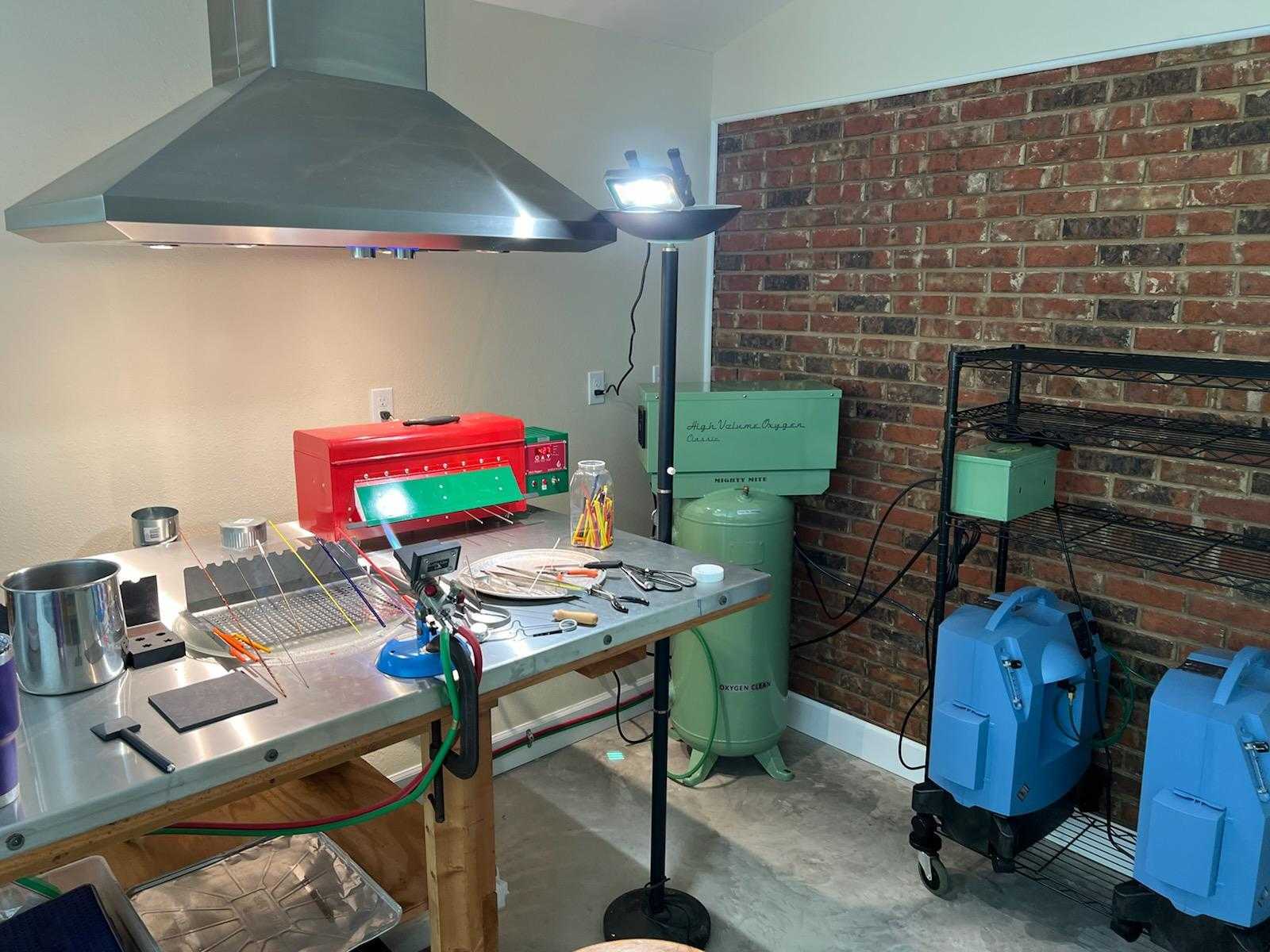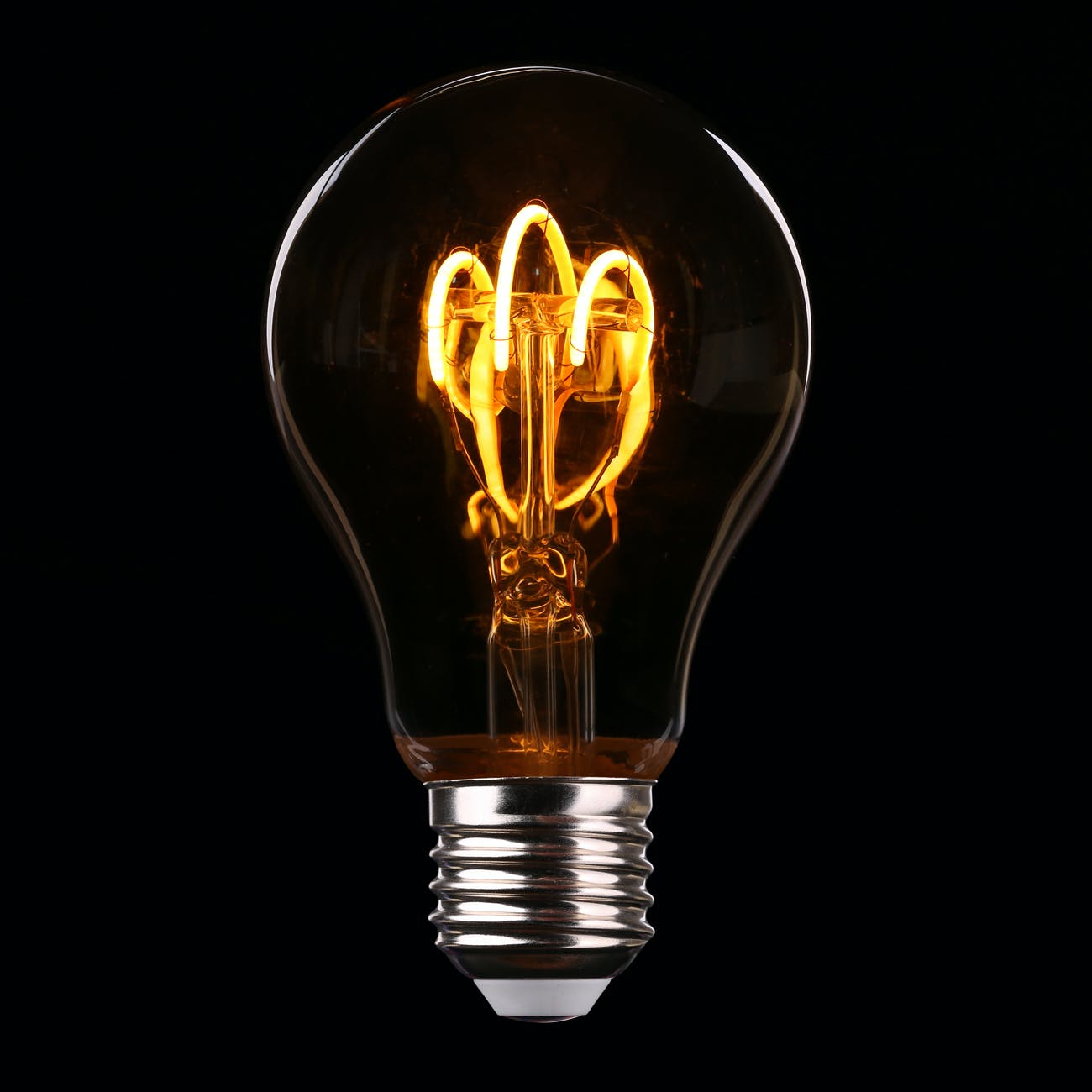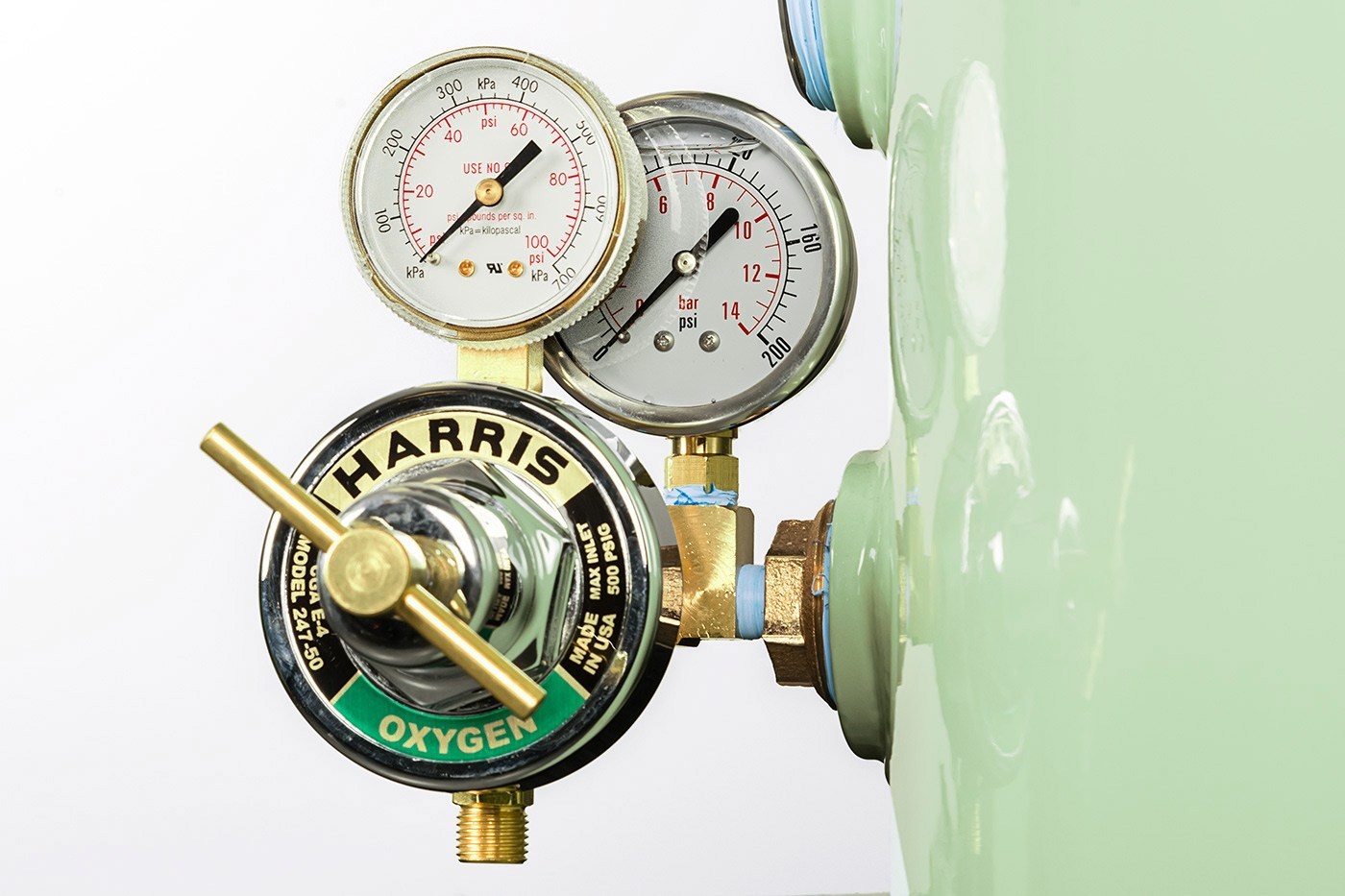
This simple question has a not-so-simple answer, as there are many factors that influence the cost of oxygen. Gas company prices vary significantly depending on where you’re located, whether you’re getting scheduled deliveries, and whether you have an annual contract. The amount of oxygen you use will impact the cost of compressed, liquid, and generated oxygen. To make the most economical choice, let’s examine your requirements.
Click here to take our oxygen cost survey.
Results will be published on our website.
How much oxygen do you need?
To quantify oxygen, you may use volume, weight, or flow rate. For volume, the common unit in the US is standard cubic feet (SCF), whereas Europe and elsewhere use standard cubic meters (M3). If your concern is weight, gas is commonly measured in pounds or kilograms. For flow, it’s typically SCFM (standard cubic feet per minute), SCFH (standard cubic feet per hour), or SLPM (standard liters per minute).
To understand the meaning of the word “standard” in these units of measurement, read this article. It’s pretty important. The short explanation is that the “S” in SCFM implies standard temperature and pressure, whereas CFM implies actual temperature and pressure.
Calculating vs. Testing
It’s not easy to calculate your oxygen requirements accurately, as there are many variables to put into the equation. For this reason, I recommend setting up a simple test in which you measure oxygen usage with a flow meter such as the HVO Oxygen Tracker, and, if needed, a temporary oxygen source, such as a compressed tank. Find your actual flow rate by measuring usage in an isolated part of your system, e.g. one nano-bubbler or one diffuser. You can extrapolate from the test to calculate your overall requirements. See this article about the benefits of a flow sensor that can store data in the cloud.
Delivered LOX
If you use a large amount of oxygen, you may want to install a permanent, on-site LOX tank. For this privilege, the gas company will charge you $20,000+ for the tank, evaporator and other equipment. This setup requires a concrete platform that you must build. For the LOX itself, you’ll pay a price per 100 CF, as well as delivery and other fees.
To get a permanent, on-site LOX tank, you’ll have to sign a contract with the gas company that will lock you into a price for at least a year. Pay careful attention to the contract language, as these contracts typically renew automatically and may require you to cancel well in advance if you intend to renegotiate.
Delivered Tanks
The price of delivered oxygen takes into account your distance from the gas company. They’re not going to haul those big steel tanks for free. You must schedule your delivery in advance or you’ll have to pay for expedited service. There’s always the possibility of a price increase, or being denied service because, for example, the tanks you own are deemed unsafe. If you don’t own tanks, you’ll pay a rental fee. During bad weather, it may not be possible for the delivery truck to reach you.
Before getting tanks delivered, check your local zoning ordinances. It may be illegal for you to use compressed or LOX tanks in your office building or home. For good reason, fire marshals are generally much less concerned about generated oxygen tanks that achieve a high pressure of 150 PSI vs. compressed tanks at 2200 PSI.
Also, make sure that you understand the coverages in your insurance policy pertaining to the use of oxygen in your home or business.
Generated Oxygen
For many applications, the argument for making your own oxygen is hard to counter: it’s safer (low pressure tanks), easier (no tanks to lug), and much less costly than delivered oxygen. The cost per kilogram for HVO systems is in the range of 7-10 cents, depending on the scale, and larger systems are generally the most economical. The time to break-even is typically from 9 – 18 months.
No Wasted Gas
Liquid oxygen tanks will periodically blow off pressure, which can be alarming if you’ve never experienced it. The pressure in the LOX tank builds until a safety blow-off valve achieves its release pressure. The resulting ejection of oxygen creates a loud sound like a steam locomotive coming to a stop. A LOX tank may blow off as much as 10% of its contents every day. That’s oxygen that you’re paying for, but getting no benefit.
With oxygen generation, you make what you need, so there’s very little waste.
Eliminate Contamination
If tanks are delivered and empties removed on a regular basis, people will be going in and out of your facility with hand-trucks and tanks. Both the delivery person and the tanks may be contaminated with a variety of substances. I’m not talking about poisons, necessarily, but detritus like mud and dust that may contain seeds, spores, bacteria, and viruses. If you’re running a clean, indoor facility, using generated oxygen will prevent those contaminants from entering your environment.
You can improve the situation somewhat by using medical-grade oxygen, which is delivered in clean tanks. However, this only strengthens the financial argument for generated oxygen, as medical-grade oxygen is even more costly than industrial grade.
Never Run Out
For some businesses, the cost of running out of oxygen is perhaps higher than any other cost. If you’re using delivered oxygen to support the life of animals (e.g. in a vet facility), or aquatic life (in a fish farm), running out unexpectedly could result in a significant financial loss.
With generated oxygen systems, if you have power, you have oxygen. Having a backup power generator will ensure that you always have power. It may also be beneficial to keep backup oxygen tanks on standby in the event of an extended power outage.
Not for Everyone
There are two cases where I would say that delivered oxygen is a better alternative to making your own. First, if your consumption rate is greater than 10,000 SCF of oxygen per day, the economics may be better for LOX. Second, if you must have 99.99% pure oxygen, compressed tanks and LOX are your only alternatives. Generated oxygen systems produce 93-95% pure oxygen, which is enough for the majority of applications, but not for all. Laser cutters, for example, require 99.99% pure oxygen.
Real Numbers
In November, 2019 I saw prices for a single 300 CF compressed cylinder as low as $12 and as high as $85 — a 7X difference. Interestingly, those two prices came from the same gas company, in the same location! The high price was for a drop-in refill. The low price was for multiple, regularly-delivered tanks in a one year contract.
For liquid oxygen, this particular vendor quoted about $200 for a 180 dewar, which contains 4,650 SCF.
Results of Survey
From the responses I received in the TorchTalk and Concentrated Lampworkers forums on Facebook, I created a map of oxygen costs by location. The green markers are for compressed gas, while the blue ones are for liquid oxygen.
Return on Investment (ROI)
Below we’ll look at a 3-year return on investment model in which we compare an HVO system to compressed and liquid oxygen delivered by your local gas company.
Head-to-Head with Compressed O2
In this scenario, assume that your usage is three K tanks per week, which is equivalent to about 750 cubic feet of oxygen. You work 5 days a week, 8 hours a day, and you get a delivery of three tanks every week. According to the data shown in the map above, the median price per K tank is $20. Using that number, your cost for delivered oxygen will be $60 per week plus delivery, tank rental, and hazmat charges that will amount to at least $40 per week. That’s $100 x 52 = $5,200 per year for K-tanks.
Let’s further assume that you require no more than 30 PSI of line pressure, and that your average flow rate is 15-20 LPM with short bursts of 30 LPM. For this application, we would recommend an HVO Classic 20-gallon system with two 10 LPM oxygen concentrators at a retail cost of $7,800 (keep your eyes peeled for sales).
Cost of Power and Maintenance
For this usage pattern, the cost of electricity will be about $2.90 per day, or $754 a year, assuming an electricity cost of roughly 0.07 per kWh (which is the average national cost for industrial power). There’s also a maintenance cost, which we’ll assume is 1% of the purchase price per year (mostly for concentrator filter replacement), which averages $7 per month. Thus, the combined power and maintenance cost to run the HVO in this scenario would be $7 + $63 = $70 per month.
Here’s how it breaks down:
-
- $5,200 / 12 = $433.33 <– monthly cost for delivered K tanks, including all fees
-
- $7,800 / 36 = $216.66 <– monthly payment on HVO (36 months @ 0% interest)
-
- $216.66 + $70 = $286.66 <– monthly payment plus power and maintenance
-
- $433.33 – $286.66 = $ 146.67 <– your monthly savings over delivered K tanks
With an HVO system, your monthly costs will be lower, you won’t ever run out of oxygen, you won’t have to lug tanks or risk your life if you drop one, and your system will pay for itself in less than 27 months. At the end of three years you’ll have an extra $1,320 in your pocket. In 5 years, you’ll be ahead $4,840.
Head-to-Head with LOX
In this scenario, assume that you use a 180 dewar every day. That’s a massive amount of oxygen, but some applications (e.g. aquaculture, vertical farming) have very large consumption. In a 24 hour period, a 120 SLPM HVO system will generate about 24% more oxygen than is contained in a 180 dewar.
If your oxygen cost is $200 per dewar every day, that’s $200 * 365 = $73,000 a year for delivered oxygen vs. about $45,000 for an HVO 120 SLPM system that will keep on generating oxygen, year after year.
With this particular HVO system, you’ll pay about $418 per month for power and maintenance. Assume that you’re amortizing your HVO system over 36 months. Your monthly savings over delivered oxygen would be a whopping $4,415. Really. Let’s do the math:
-
- $73,000 / 12 = $6,083 <– monthly cost of 180 dewars
-
- $45,000 / 36 = $1,250 <– monthly payment on HVO (36 months @ 0% interest)
-
- $1,250 + $418 = $1,668 <– monthly payment plus power and maintenance
-
- $6,083 – $1,668 = $4,415 <– your monthly savings over delivered LOX
With this savings, you’ll break even in less than 17 months.
Think about it. You can buy delivered oxygen for $73,000 every year. Or, you can buy a 120 SLPM HVO system for $45,000, save $83,885 in the first three years and $52,980 every year thereafter. Not a tough decision.
How much are you paying?
It would be great to see comments from those of you who are using oxygen for industrial applications. How much does your oxygen cost?


























